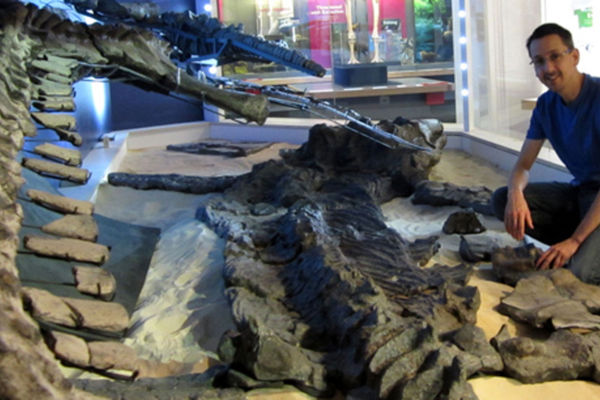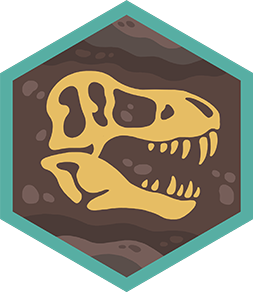Interview a paleontologist
Prepare and conduct an interview with a paleontologist to ask about fossils, fieldwork, and career paths; learn how scientists study Earth's ancient life.



Step-by-step guide to interview a paleontologist
Evolution | What do you know about DINOSAUR FOSSILS ?? | Earth Science For Kids
Step 1
Ask an adult to help you find a paleontologist to contact for an interview.
Step 2
Decide with your adult whether you will video call phone or email the paleontologist.
Step 3
Spend 15 minutes researching fossils fieldwork and scientist careers and write three facts in your notebook.
Step 4
Write 8 to 12 clear questions in your notebook about fossils fieldwork and career paths.
Step 5
Put your questions in the order you want to ask them using sticky notes.
Step 6
Practice asking your questions out loud while timing yourself with the timer or clock.
Step 7
Have your adult help you send a polite message or call to schedule the interview.
Step 8
Set up headings in your notebook labeled Answers New words and Follow-up before the interview.
Step 9
Be ready five minutes early with your notebook pencil and questions at the interview time.
Step 10
Start the interview by saying your name and one short sentence about why you are curious about fossils.
Step 11
Ask each question one at a time.
Step 12
Write clear notes of the paleontologist’s answers and jot down any new words you hear.
Step 13
Ask the paleontologist for one fun tip or a book or website to learn more.
Step 14
Say thank you and ask how you can follow up or stay in touch.
Step 15
Share your finished interview summary on DIY.org
Final steps
You're almost there! Complete all the steps, bring your creation to life, post it, and conquer the challenge!


Help!?
What can we use if we don't have sticky notes, a timer, or a notebook?
Use folded paper or index cards to order questions instead of sticky notes, your phone's clock or alarm for timing practice instead of a separate timer, and a digital document or a single sheet of paper with the Answers, New words, and Follow-up headings in place of a notebook.
What should we do if the paleontologist cancels, the call has bad audio, or I feel too nervous during the interview?
Have your adult help reschedule or switch the agreed method (video call, phone, or email) as step 2 and step 6 suggest, test audio beforehand and be ready five minutes early, and use your timed practice and the opening line 'your name and one short sentence about why you are curious about fossils' to calm nerves.
How can we adapt the number of questions and note-taking for younger or older kids?
Younger kids can prepare 3–5 simple questions on sticky notes and have an adult write clear notes or draw answers in the notebook headings, while older kids can research longer, write 8–12 detailed questions, time themselves with the timer during practice, and take fuller notes under Answers and New words.
How can we extend or personalize the finished interview before sharing on DIY.org?
Turn the notebook Answers and New words into an illustrated one-page summary or short recorded recap, include the paleontologist's fun tip or book/website recommendation from step 14, and add photos or a short reflection in the Follow-up section before posting on DIY.org.
Watch videos on how to interview a paleontologist
How to find Fossils | Nature Education for Kids
Facts about paleontology
⛏️ Paleontological fieldwork often means camping, mapping rock layers, and carefully brushing away dirt for days.
🦴 Fossils can be tiny like pollen grains or huge like a Tyrannosaurus rex skeleton.
🎓 Many paleontologists study geology, biology, or Earth science and build skills through digs, labs, and museum work.
🌍 Matching fossils on different continents helped scientists realize continents have moved over time (continental drift).
🔬 Modern paleontologists use tools like CT scans, microscopes, and 3D models to study fossils without breaking them.
How do I prepare and conduct an interview with a paleontologist?
What materials do I need to interview a paleontologist?
What ages is interviewing a paleontologist suitable for?
What are the benefits and safe variations of interviewing a paleontologist?


One subscription, many ways to play and learn.
Only $6.99 after trial. No credit card required



